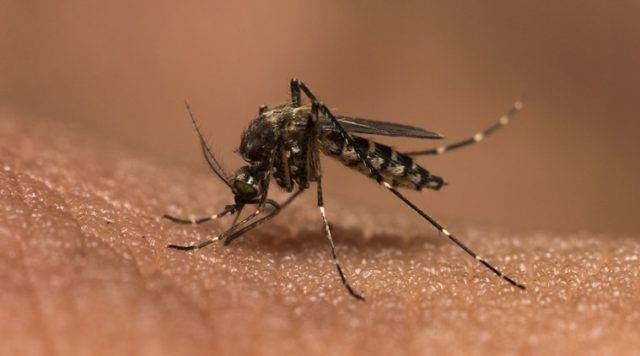Karachi (Web Desk): According to the initial reports, more than 1, 500 people have been affected by an unidentified disease which has spread through the area of Malir, Saudabad and Shah Faisal neighborhoods of the Khokhrapar.
According to doctors, people are complaining about fever, bone and pain in joints due to this mysterious disease.
Hospital officials reported that 70 people from the hospital staff have been affected with this disease as well and is targeting everyone, children, teens and adults.
Senior Director Health Services formed a committee to investigate the disease and also start an awareness campaign.
According to Health Director also said that the potential reason for this disease to spread among others is a mosquito which resembles the dengue mosquito. As reduction in platelets of those affected has been reported.
World Health Organization (WHO) says it’s Chikungunya virus that can become epidemic in the country.
Indicators:
A viral disease transmitted to humans by infected mosquitoes is called Chikungunya. It causes fever and severe joint pain. Other symptoms include muscle pain, headache, nausea, fatigue and rash.
In most of the cases joint pain is often debilitating that can vary in duration.
This disorder shares some clinical signs with dengue, and can be misdiagnosed in areas where dengue is common.
Though there is no cure for the disease. Treatment is focused on relieving the symptoms.
The proximity of mosquito breeding sites to human habitation is a significant risk factor for Chikungunya.
In 2007, disease transmission was reported for the first time in a localized outbreak in north-eastern Italy. Outbreaks have since been recorded in France and Croatia.
The disease occurs in Africa, Asia and the Indian subcontinent. In recent decades mosquito vectors of chikungunya have spread to Europe and the Americas.
Signs and symptoms:
Chikungunya is exemplified by an abrupt onset of fever frequently accompanied by joint pain. Other common signs and symptoms include muscle pain, headache, nausea, fatigue and rash.
The joint pain is often very debilitating, but usually lasts for a few days or may be prolonged to weeks. Hence the virus can cause acute, subacute or chronic disease.
Most patients recover fully, but in some cases joint pain may persist for several months, or even years. There are rare cases neurological and heart complications have been reported, as well as gastrointestinal complaints. Serious complications are not common, but in older people, the disease can contribute to the cause of death. Often symptoms in infected individuals are mild and the infection may go unrecognized, or be misdiagnosed in areas where dengue occurs.
Transmission:
Chikungunya has been identified in over 60 countries in Asia, Africa, Europe and the Americas.
The virus is transmitted from human to human by the bites of infected female mosquitoes. Most commonly, the mosquitoes involved are Aedes aegypti and Aedes albopictus, two species which can also transmit other mosquito-borne viruses, including dengue. These mosquitoes can be found biting throughout daylight hours, though there may be peaks of activity in the early morning and late afternoon. Both species are found biting outdoors, but Ae. aegypti will also readily feed indoors.
After the bite of an infected mosquito, onset of illness occurs usually between 4 and 8 days but can range from 2 to 12 days.
Prevention and control:
The proximity of mosquito vector breeding sites to human habitation is a significant risk factor for chikungunya as well as for other diseases that these species transmit. Prevention and control relies heavily on reducing the number of natural and artificial water-filled container habitats that support breeding of the mosquitoes. This requires mobilization of affected communities. During outbreaks, insecticides may be sprayed to kill flying mosquitoes, applied to surfaces in and around containers where the mosquitoes land, and used to treat water in containers to kill the immature larvae.
For protection during outbreaks of chikungunya, clothing which minimizes skin exposure to the day-biting vectors is advised. Repellents can be applied to exposed skin or to clothing in strict accordance with product label instructions.
Repellents should contain DEET (N, N-diethyl-3-methylbenzamide), IR3535 (3-[N-acetyl-N-butyl]-aminopropionic acid ethyl ester) or icaridin (1-piperidinecarboxylic acid, 2-(2-hydroxyethyl)-1-methylpropylester). For those who sleep during the daytime, particularly young children, or sick or older people, insecticide-treated mosquito nets afford good protection. Mosquito coils or other insecticide vaporizers may also reduce indoor biting.
Basic precautions should be taken by people travelling to risk areas and these include use of repellents, wearing long sleeves and pants and ensuring rooms are fitted with screens to prevent mosquitoes from entering.


